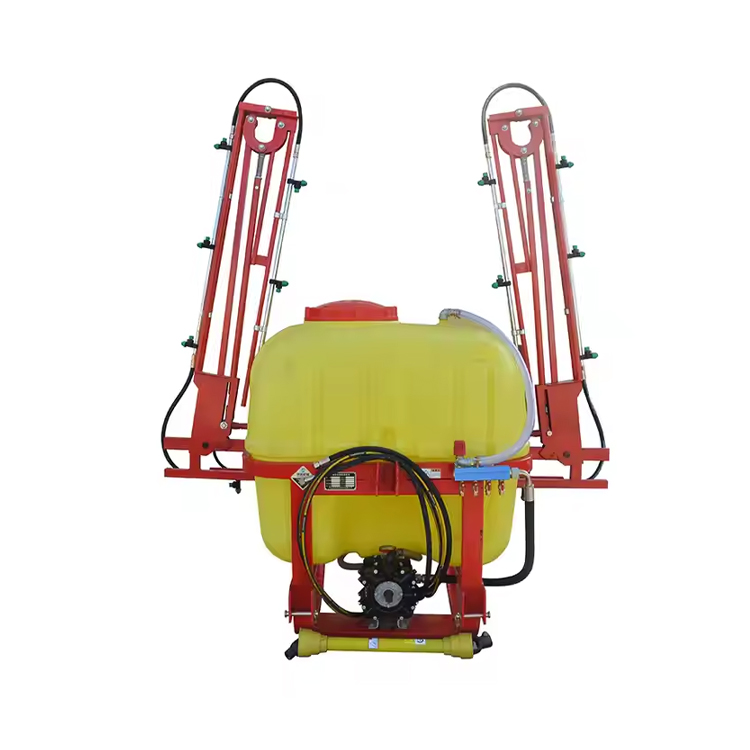Understanding Boom Sprayers: A Key Tool in Modern Agriculture
2025-02-13
Boom sprayers play a crucial role in agricultural operations, helping farmers efficiently apply fertilizers, herbicides, pesticides, and even water to crops. These versatile machines are designed to cover large areas quickly and uniformly, making them indispensable for modern farming practices. This article explores what boom sprayers are, how they work, their types, and their benefits in agriculture.
What is a Boom Sprayer?
A boom sprayer is a piece of agricultural equipment used to spray liquids over crops. The "boom" refers to the horizontal arm attached to the sprayer, which contains multiple nozzles that distribute the liquid evenly over a wide area. These sprayers can be mounted on tractors, pulled as trailers, or used as standalone units, depending on the size and design.
Boom sprayers are widely used in farming to ensure consistent application of chemicals or nutrients, promoting healthy crop growth and preventing pests or weeds from reducing yields.
How Does a Boom Sprayer Work?
A boom sprayer operates through a relatively straightforward process:
1. Tank: The liquid to be sprayed is stored in a large tank. This liquid can be a pesticide, herbicide, fertilizer, or water.
2. Pump: A pump moves the liquid from the tank through the sprayer system. It creates the necessary pressure to deliver the liquid evenly across the spray area.
3. Boom and Nozzles: The liquid travels through the boom, which holds multiple nozzles spaced evenly along its length. These nozzles control the spray pattern and droplet size for precise application.
4. Control System: Most modern boom sprayers feature advanced control systems, allowing operators to adjust pressure, flow rate, and coverage area based on the crop’s needs.
Types of Boom Sprayers
There are several types of boom sprayers, each suited to specific farming conditions:
1. Tractor-Mounted Boom Sprayers:
These are attached to a tractor and are ideal for large-scale farming operations. They can cover extensive fields efficiently.
2. Trailer Boom Sprayers:
Pulled by a tractor or other vehicles, trailer sprayers are versatile and can carry larger tanks for spraying larger fields.
3. Self-Propelled Boom Sprayers:
These are standalone units with their own engine, designed for maximum efficiency and maneuverability. They are commonly used in commercial agriculture.
4. Manual Boom Sprayers:
Lightweight and operated manually, these are used in smaller fields or areas where precision application is required.
Benefits of Using Boom Sprayers
1. Uniform Application:
The multiple nozzles on a boom sprayer ensure an even distribution of liquids, reducing the chances of over- or under-application. This uniformity is essential for the health and productivity of crops.
2. Efficiency:
Boom sprayers can cover large areas quickly, saving time and labor compared to manual spraying methods.
3. Cost-Effectiveness:
By delivering precise amounts of chemicals or fertilizers, boom sprayers minimize waste and reduce input costs for farmers.
4. Customization:
Many boom sprayers are equipped with adjustable settings for flow rate, spray width, and droplet size, enabling farmers to tailor the application to specific crops and field conditions.
5. Reduced Environmental Impact:
Advanced boom sprayers are designed to minimize drift and target only the intended area, reducing chemical runoff and protecting the surrounding environment.
Key Considerations When Choosing a Boom Sprayer
When selecting a boom sprayer, farmers should consider the following factors:
1. Field Size:
Larger fields require higher-capacity sprayers with longer booms to maximize efficiency.
2. Crop Type:
The type of crop being sprayed will influence the choice of nozzle type and spray pattern.
3. Terrain:
For uneven or hilly terrain, a self-propelled or trailer sprayer with advanced suspension systems may be more suitable.
4. Technology Features:
Many modern sprayers come with GPS guidance, flow control, and variable-rate application systems. These features enhance precision and make the sprayer easier to operate.
5. Maintenance and Durability:
Farmers should select a sprayer built with high-quality materials and a reliable pump system to ensure longevity and consistent performance.
Maintenance Tips for Boom Sprayers
To ensure optimal performance and longevity, regular maintenance of a boom sprayer is essential:
- Clean the tank, boom, and nozzles thoroughly after each use to prevent clogging.
- Check the pump and filters for wear or damage and replace them as needed.
- Inspect nozzles regularly to ensure they are not blocked or worn, which can affect spray patterns.
- Lubricate moving parts and tighten any loose connections to prevent leaks.
- Store the sprayer in a dry, covered area to protect it from weather damage.
Conclusion
Boom sprayers are a cornerstone of modern agriculture, enabling efficient and precise application of essential chemicals and nutrients. Whether you are a small-scale farmer or managing extensive agricultural land, choosing the right boom sprayer can make a significant difference in crop health and productivity. With proper use and maintenance, a boom sprayer can enhance farming efficiency, reduce costs, and contribute to sustainable agricultural practices.



